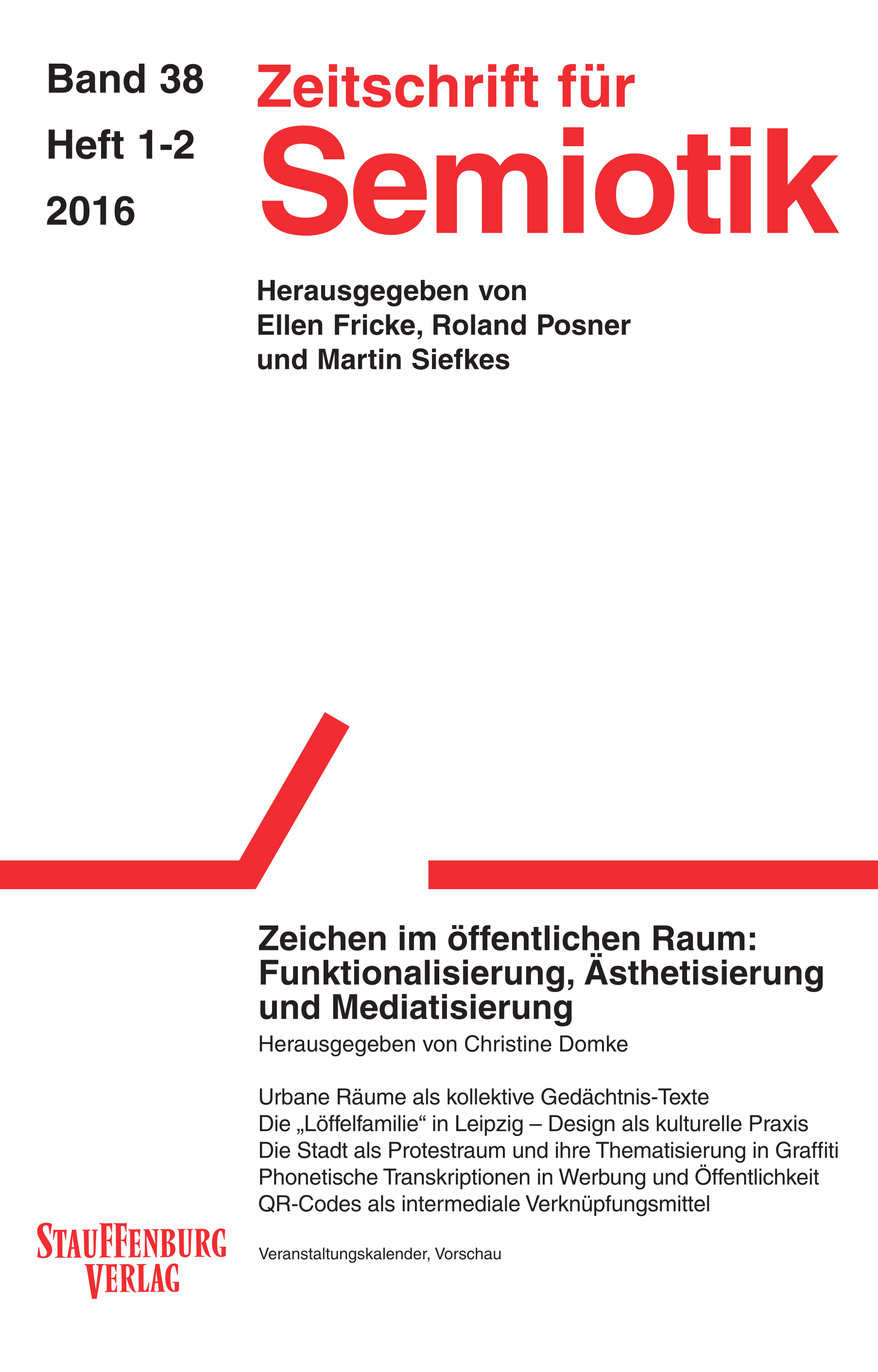Tahrir Is Not a Square. Wie meta-urbane Protestkommunikate städtische Territorien des Widerspruchs strukturieren.
DOI:
https://doi.org/10.14464/zsem.v38i1-2.622Keywords:
protest communication, Tahrir Square, Arab spring, graffiti, stencil, linguistic landscapeAbstract
Summary. Inscriptions in the publicly accessible space of the city are an important research topic of sociolinguistics. Writings of all kind do not only shape urban space but also produce specific places which wouldn’t exist without them. The focus of this paper is how a space of urban protest is constructed; it will be shown how communicative forms of protest create place. The example discussed is a stencil which specifically refers to the Tahrir square in Cairo but at the same time accomplishes much more through interspatial, interdiscursive, and intermedial references. This stencil can be understood as part of an association of places which makes urban space describable as a territory of contradiction. The contribution provides a detailed ethnographic analysis of the use of stencils in Berlin Prenzlauer Berg and goes on to highlight possibilities of a sociolinguistic and semiotic analysis of urban territories of contradiction at large.
Downloads
Published
Issue
Section
License
Copyright (c) 2023 Ingo H. Warnke

This work is licensed under a Creative Commons Attribution 4.0 International License.
Copyright for articles published in this journal is retained by the authors. The content is published under a Creative Commons Licence Attribution 4.0 International (CC BY 4.0). This permits use, distribution, and reproduction in any medium, provided the original work is properly cited, and is otherwise in compliance with the licence.


